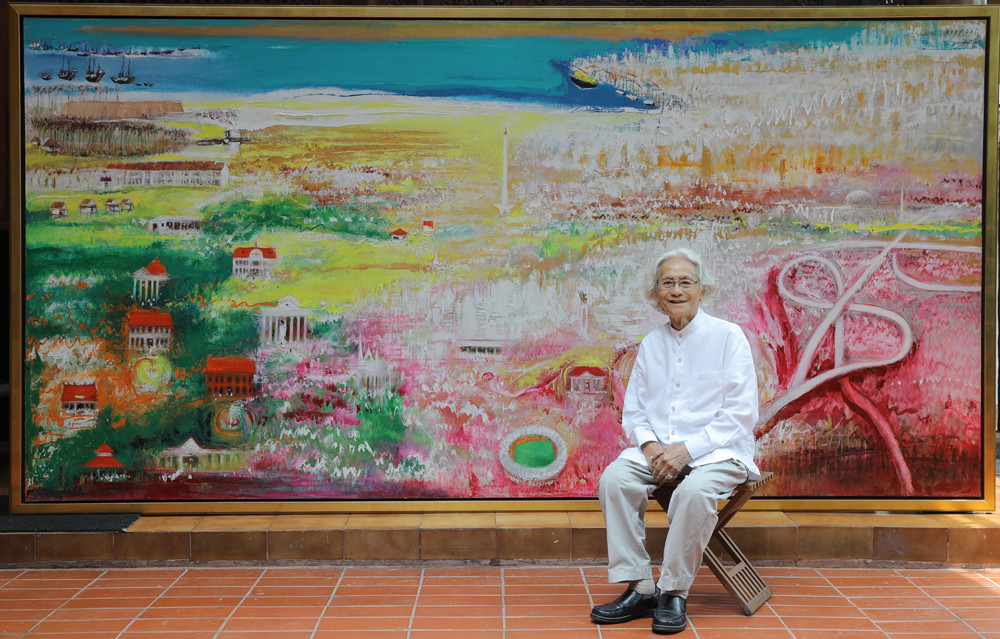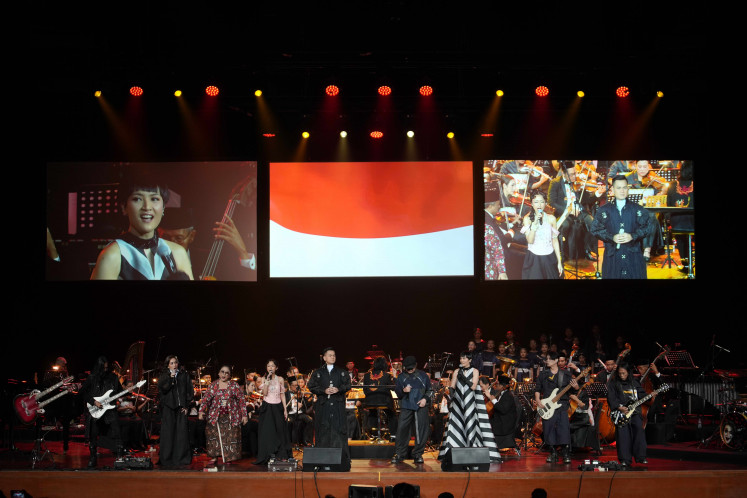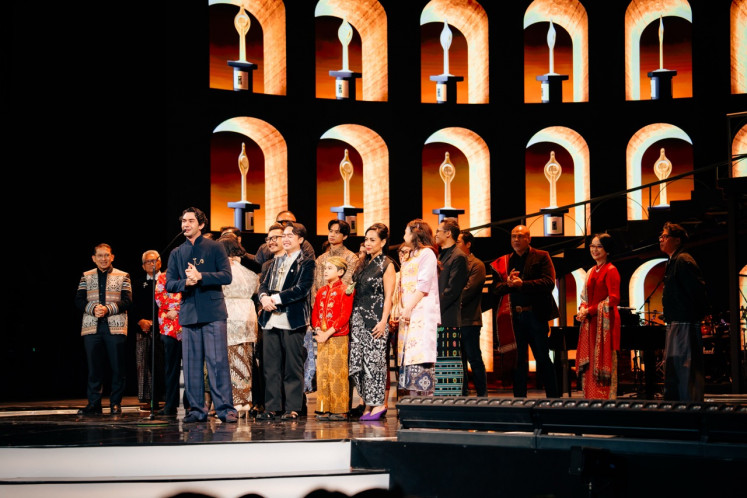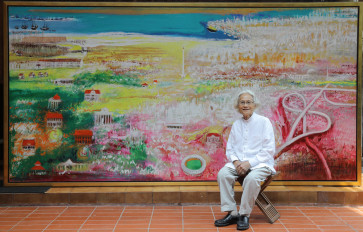Popular Reads
Top Results
Can't find what you're looking for?
View all search resultsPopular Reads
Top Results
Can't find what you're looking for?
View all search resultsSrihadi Soedarsono paints Jakarta in its past, present and future glory
A 2-by-4 meter oil on canvas is painted in the unique Wayang Beber style, portraying Jakarta in different eras by vivid colors and important landmarks.
Change text size
Gift Premium Articles
to Anyone
S
ince the 16th century, Jakarta has wielded a pivotal role in Indonesia’s history. The city saw the first Dutch ships arrive in the archipelago, became the stronghold of the Vereenigde Oost-Indische Compagnie (VOC) in the East Indies and witnessed the country’s proclamation of independence in 1945. The capital and seat of Indonesia’s government has continued to grow in size and influence.
A 2-by-4 meter oil on canvas is painted in the unique Wayang Beber style, portraying Jakarta in different eras by vivid colors and important landmarks.
“I see Jakarta as the starting point of Indonesia’s development, as well as the center point of people’s hopes for the nation,” the painter said during an exclusive phone interview with The Jakarta Post on June 11.
Wayang Beber is an old storytelling technique of the Jenggala kingdom in East Java during the 13th century, in which the dalang (storyteller) narrated his story by using drawings on scrolls, instead of puppets.
“[Wayang Beber] is like a storybook with pictures,” Srihadi said.
On the top left-hand corner of the painting is a fleet of Dutch ships arriving at Sunda Kelapa Port in the early 16th century. Below are rows of fishermen’s houses in between the gray marsh.
Green represents the thick forests that used to cover the capital.


















